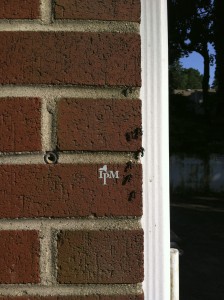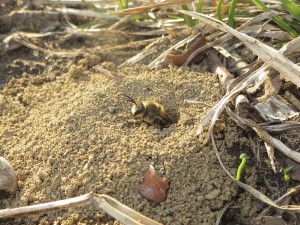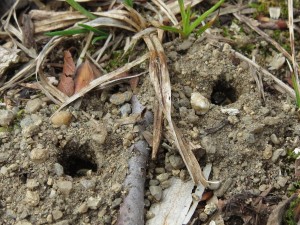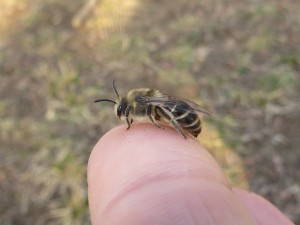A 2013 survey of the pest management policies and practices of New York State public schools was recently published on-line http://www.nysipm.cornell.edu/publications/school_survey/school_survey2013.pdf A partnership of the NYS IPM Program, the NYS Department of Health, the NYS Education Department, and the NYS School Facilities Association, the goals of the survey were to evaluate the status of IPM in public elementary and secondary schools, provide guidance on assisting schools in improving pest management, gauge changes since a 2001 survey, and ascertain the impacts of the state’s Neighbor Notification Law and the Child Safe Playing Field Act.
Highlights include a large increase in the number of school districts with written pest management policies, a low rate of issues associated with pesticide applications, and reductions in pesticide use. Prominent needs that exist concerning pest management in schools include the pervasive issue of food in classrooms and other non-cafeteria locations and the challenges associated with maintaining quality athletic fields in light of the Child Safe Playing Fields Act. The implications of the drop in certified pesticide applicators employed by schools needs to be assessed. Also, geese are increasing as a troublesome pest on school grounds
 Canada goose
Canada goose
Branta canadensis (Linnaeus, 1758)
Photo by Paul Bolstad, University of Minnesota
Approximately 73% of the districts responding to the 2013 survey indicated that they had a written pest management policy, up from 45% in 2001. Official written policies provide a consistent framework for implementing safe and effective pest management. However, most school districts did not have a policy concerning food outside of cafeterias. This is a frequent attractant for pests as ants and mice.
The percentage of school districts that employed staff certified as pesticide applicators dropped from 50% in 2001 to 34% in 2013. Most districts did not have regularly scheduled pesticide applications. However, the rate of those that did, around 23%, changed little from 2001 to 2013.
The most frequent and troublesome pests in NYS schools in both surveys were ants, stinging insects, mice, and weeds. The only pest situation that significantly increased was geese, from 14% of the districts in 2001 to 25% in 2013.
In 2013, we asked schools about their use of minimum risk pesticides, as products with boric acid or plant essential oils. Fourteen percent of the districts indicated that they used these products routinely, while 62% stated that minimum risk pesticides are used infrequently. Future trends in the use of such products by schools would be informative.
Most NYS school districts received complaints about pests within three years prior to 2013. Not over two per cent had received complaints about pesticide applications during the same period.
 Carpenter Ants foraging
Carpenter Ants foraging
Almost 90% of the survey respondents indicated that they had not experienced any problems implementing the Neighbor Notification Law, and almost 50% stated that the law resulted in a significant reduction in pesticide use by their school districts. Almost 60% indicated little impact of the Child Safe Playing Field Act since they had already implemented pesticide alternatives. About 22% stated a major impact and anticipated difficulty in maintaining quality of the grounds. Another 20% indicated moderate changes to their practices and that they were looking into pesticide alternatives. Over 60% of the survey respondents indicated that the Child Safe Playing Field Act had caused a reduction in pesticide use by their school districts.
 Once you have determined what type of field you are managing, and what seasons sports are being played on it, you can download a Seasonal Field Management Schedule. For example:
Once you have determined what type of field you are managing, and what seasons sports are being played on it, you can download a Seasonal Field Management Schedule. For example:





